With all that’s underway (waves hands around, wildly), I’m narrowing the focus to my interior sphere of attention, to look at local stats on education.
Private school demographics
Thanks to the excellent work of Propublica, as of this week we have a broad view on who attends public school versus private in the United States. The implication of segregation in private schools (& schools generally) isn’t new; it’s been observable for years nationally. But these numbers are stark:

What I really like about this database is the ability to look on a per-district level, and to get some insights about my tiny city of Burlington. Vermont is still a very white place, but this city is creeping steadily toward more appreciable diversity, and the local school district reflects that. However, the private/public dichotomy here is just as drastic as the national one: a 23%-smaller proportion of nonwhite kids attend Burlington’s private schools.
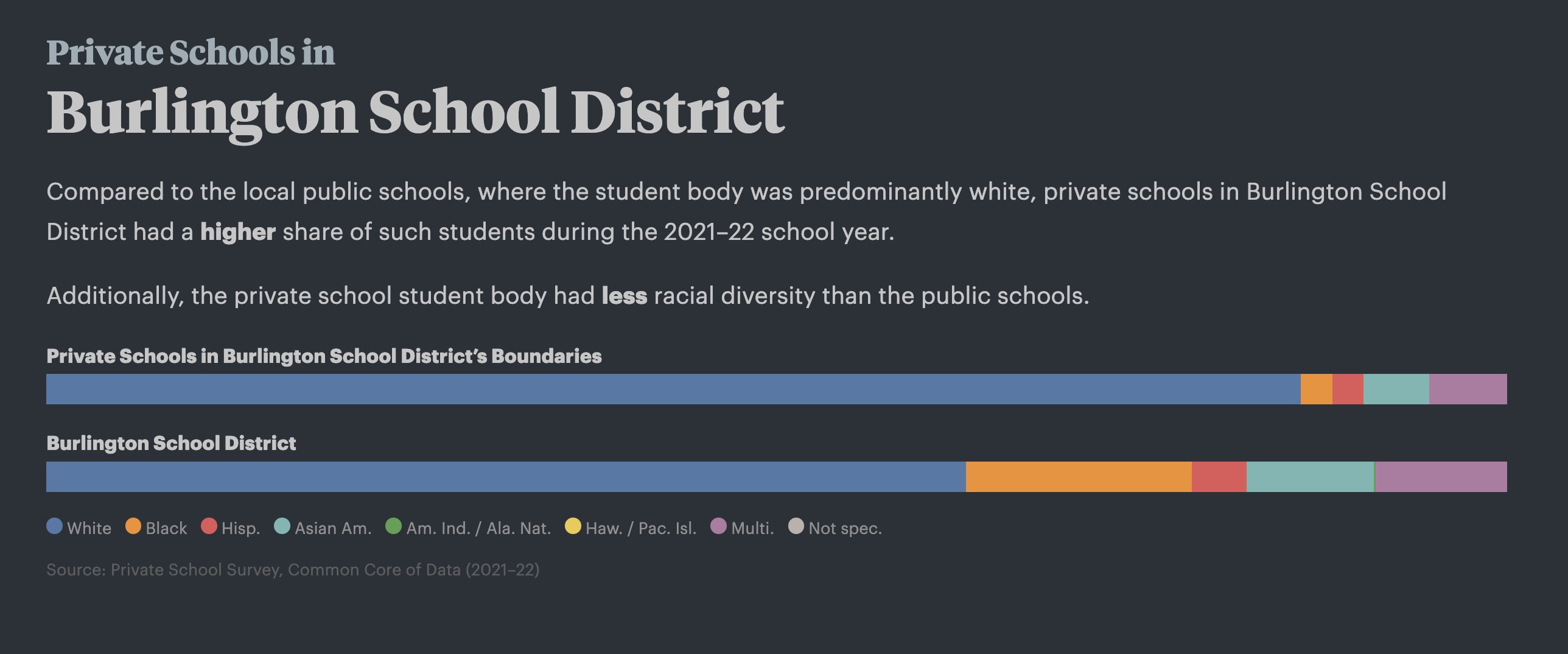
The pretty big majority of private school students here attend one of the two Catholic schools:
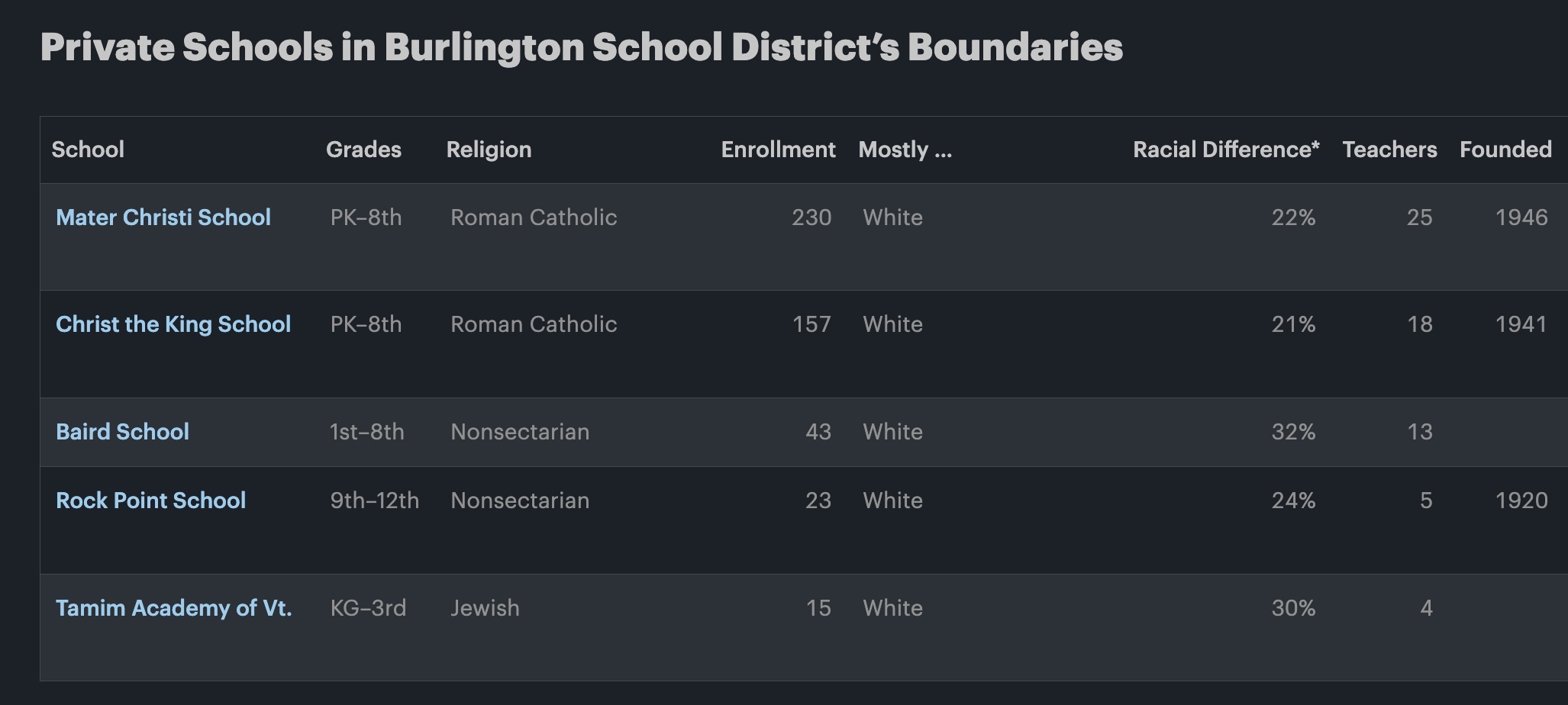
. . . but those are the elementary schools. There is a Catholic high school that serves as the principal alternative to the public one here, but it’s just over the town line in very-suburban South Burlington. And what catches my eye is that here the script is flipped:
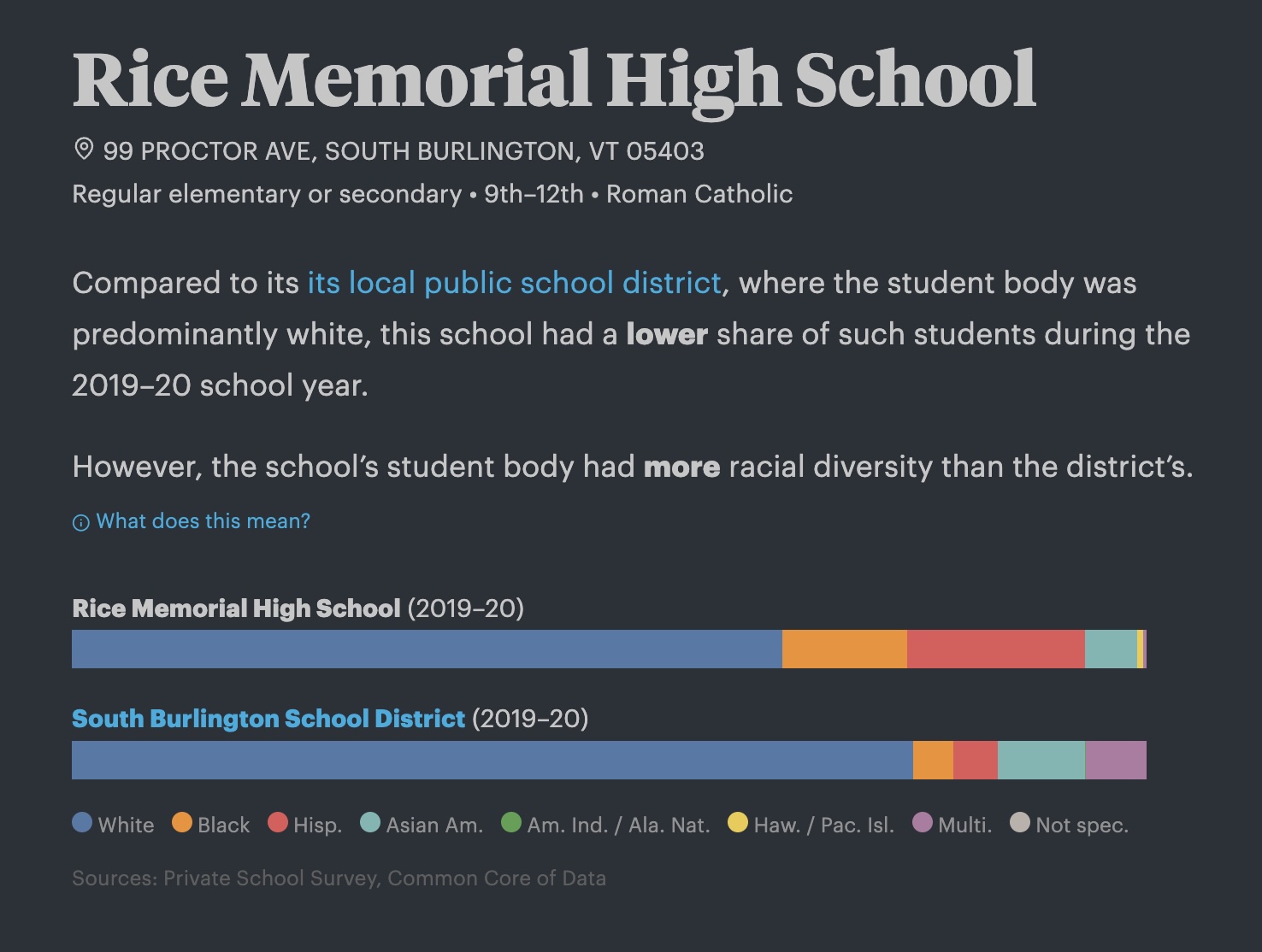
South Burlington has a much lower proportion of nonwhite students overall than Burlington does, but this Catholic private school within its borders bears a much closer demographic resemblance to the public school district of Burlington.
I’ve looked at spatial autocorrelation quite a bit in my career, but in this case it feels like waaaay too simple an explanation, with way too small of a population, and, frankly, with administrative geometry that seems designed to defy spatial analysis:
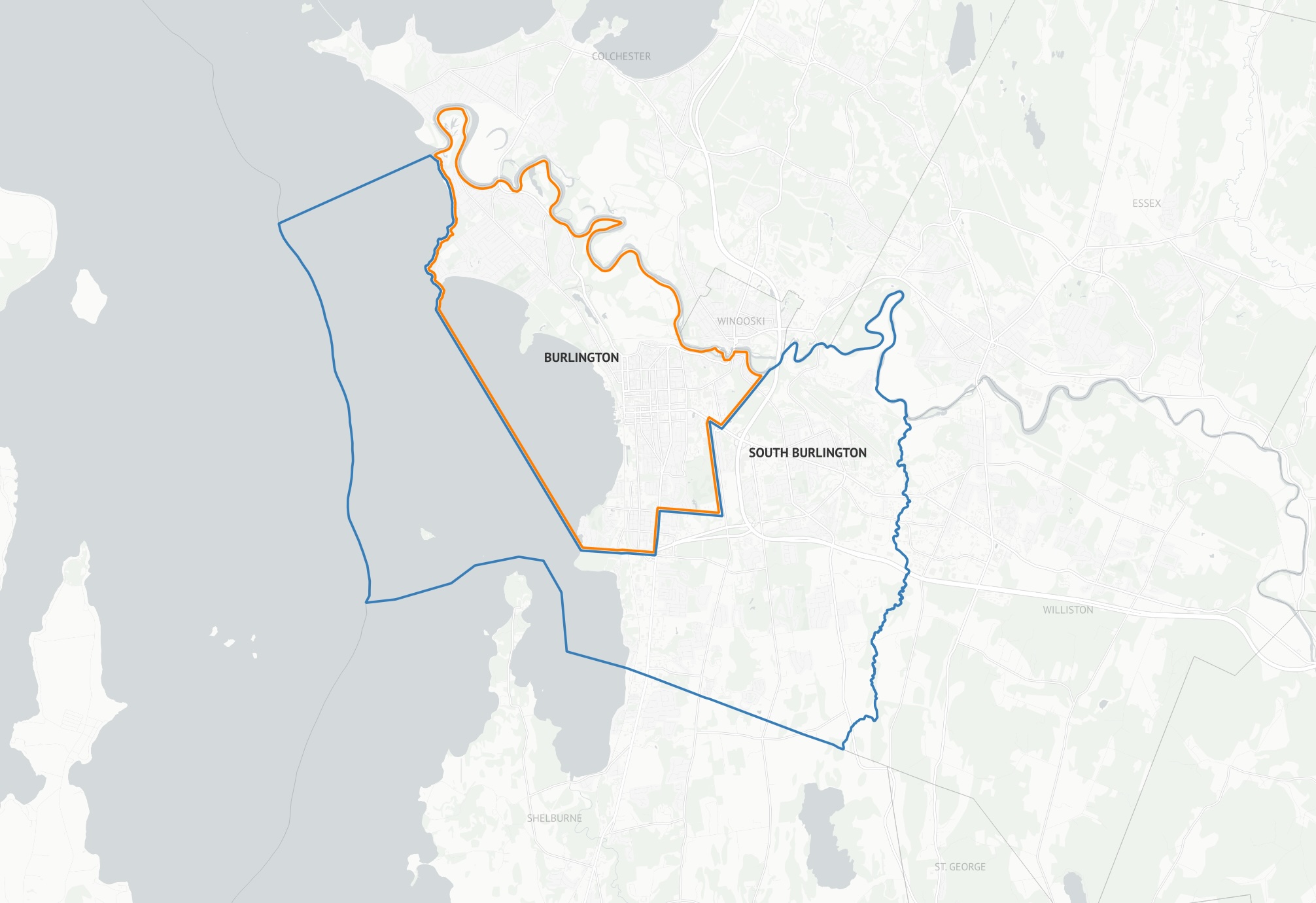
City boundaries showing South Burlington all but surrounding Burlington. Must have been a joke that Ira Allen played on cartographers.
If we pull back the scale to the state level, the inversion continues (though it’s now very white): there is a greater proportion of nonwhite kids in Vermont’s private schools than in the public ones:
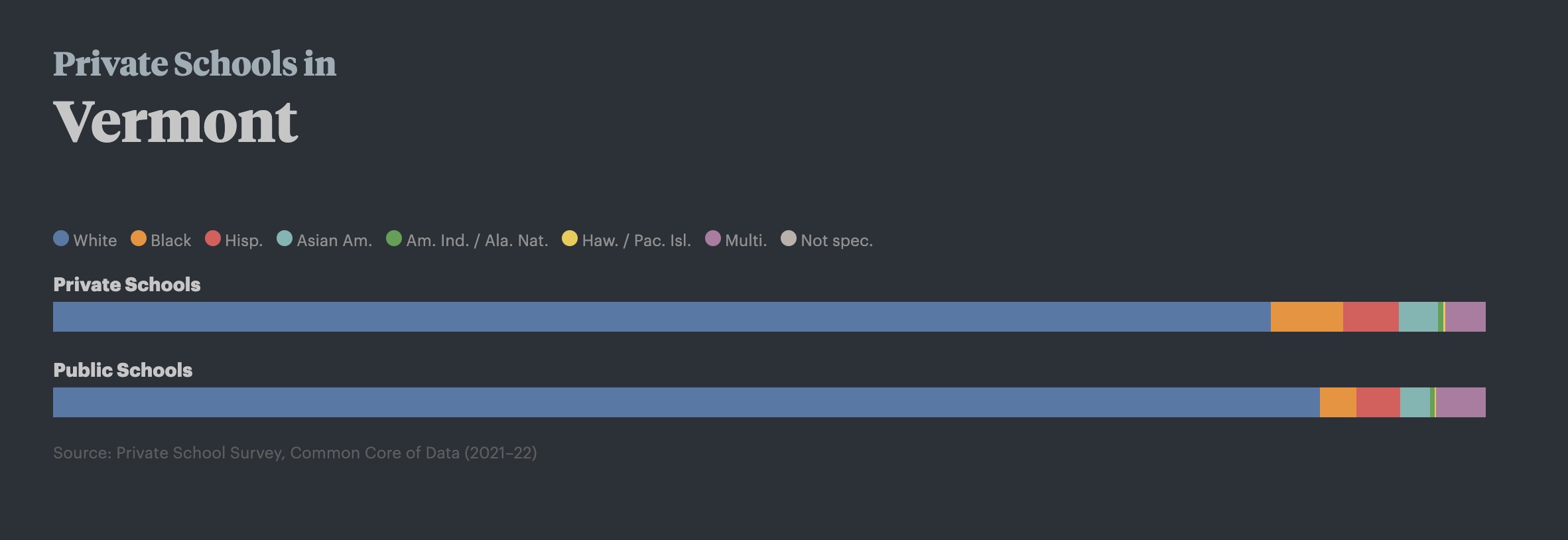
Compare that to our neighbors New York or Massachusetts, where the national trend holds:
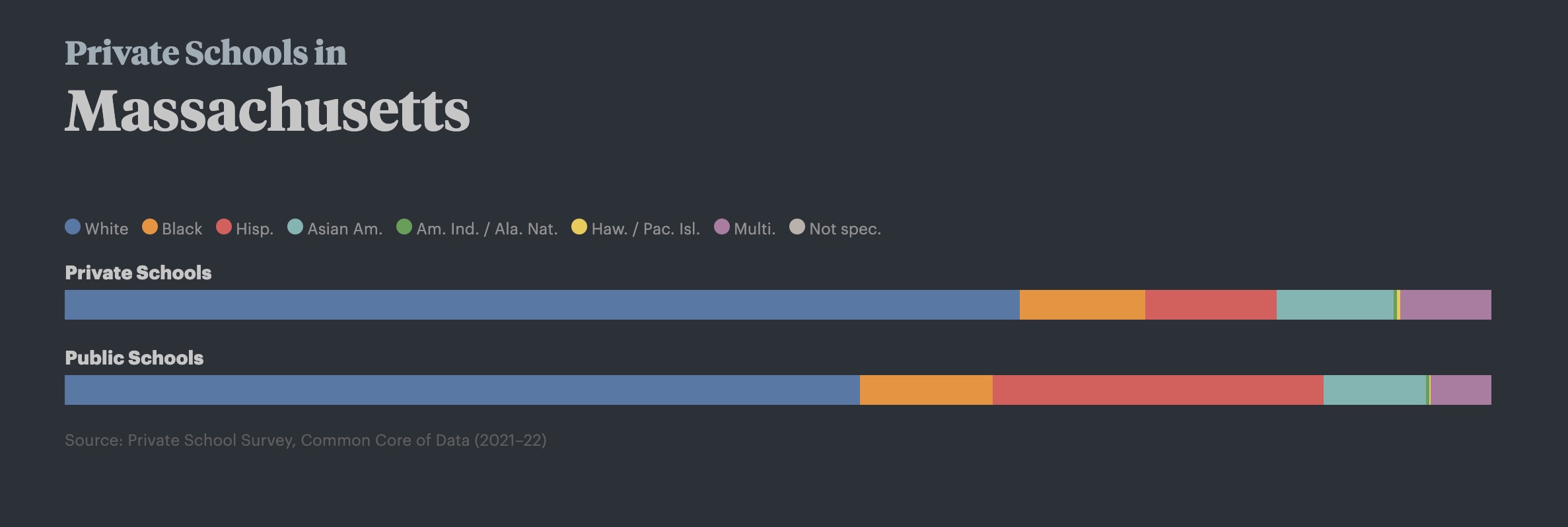
But this greater diversity among private school students holds in our similarly-rural, similarly-white Northern New England neighbors, Maine and New Hampshire:

I’m not a demographer, I’m a geographer (and I already decided my analysis toolkit doesn’t work here), but I wonder what could be causing this effect I’m observing.
In the U.S. Northeast, private school diversity seems greater than public school diversity in rural, non-diverse states.
Post-discourse update
Eagle-eyed reader Dan pointed out that this could at least partly be explained by the handful of districts where the de facto public school is actually a private school, owing to odd-but-established New England traditions:
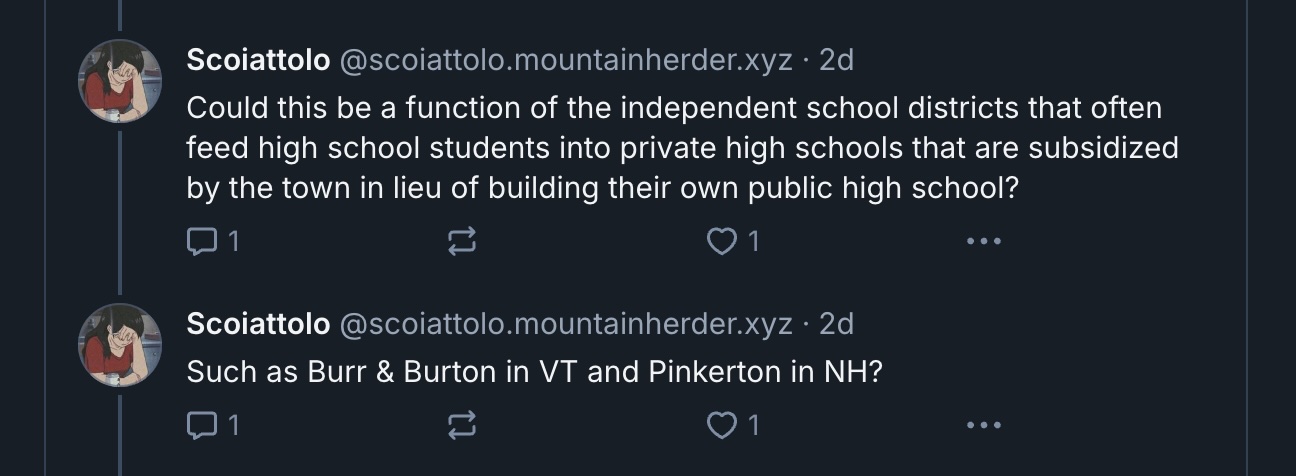
. . . which is something I should have remembered, because I actually attended one myself.